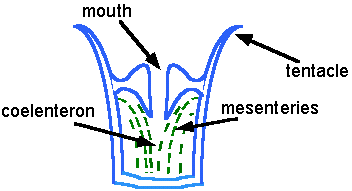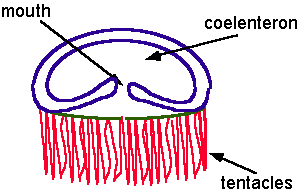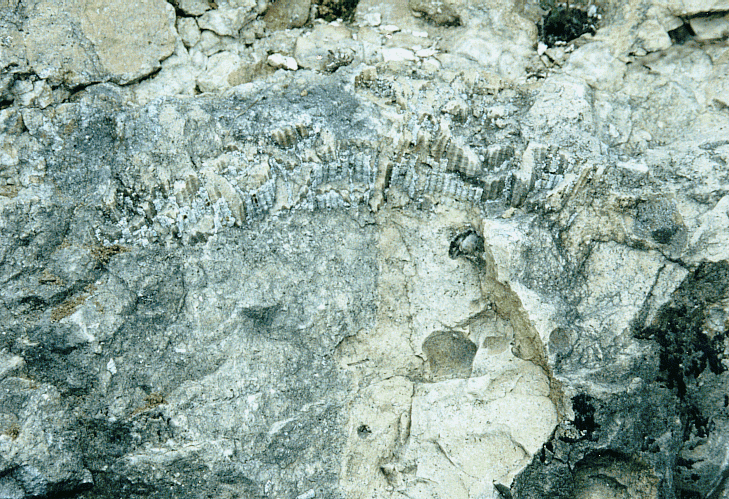

Part II. Phylum Cnidaria (Coelenterata)
B. Look at the diagrams of the polyp and medusa
below: use the list
of terms and the reading, linked above, to make sure you understand
the labelled parts.
| Polyp | Medusa |
 |
 |
C. Look at the UC Berkeley web site for another diagram of a medusa and more information about general Cnidarian morphology.
D. Read about a group of Cnidarians, the
corals.
E. Look at UC Berkeley's Cnidaria in the fossil record web site.
There are two types (Orders)
of coral you will look at in this section of the lab: rugose
coral and tabulate coral.
The green box contains information about rugose coral. You will need to
use specimens from boxes 7-10 to answer the questions in this section.
| F. Read about rugose
corals.
G. Look at the following two diagrams of rugose corals: use the list of terms and the reading, linked above, to make sure you understand how to locate the labelled parts on a specimen and how to describe them.
H. Know the common features of rugose corals:
I. Look at the following links:
J. Look at the specimens from boxes 7, 8, 9 and 10: These specimens are from Order Rugosa (solitary or colonial, large
calyx with well-developed septa).
Specimens in box 7 are Cyathophyllum, family
Zaphrentidae.
|
The second Order of corals you
will look at today are the Tabulate corals. You will need to use specimens
from boxes 4-6 to answer the questions in this section.
| K. Read about tabulate
corals. Use the diagram below and
the descriptions in the reading, linked above, to help you answer the questions.
Be sure to open the links and
look at each type of tabulate coral. This will help you answer the questions.
L. Look at the specimens from boxes 4, 5 and 6: These specimens are from Phylum Coelenterata,
Class Anthozoa, subclass Zoantharia, Order Tabulata. These are always colonial
and have small calices with reduced septa. More specifically:
 Want to see if you are correct? Give up? Click on the picture to reveal the location. N. Know the common features of tabulate corals:
|
You are finished with Part II of the lab. Choose Part I, Part III, or Part IV from the choices below, if you have not yet completed these sections.
Return to:
Last updated on February 24, 1997-jlc.